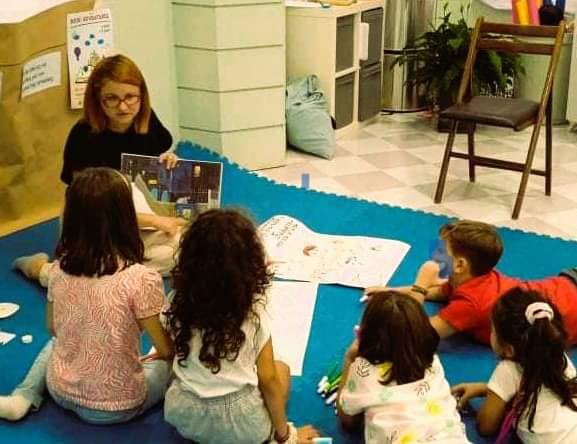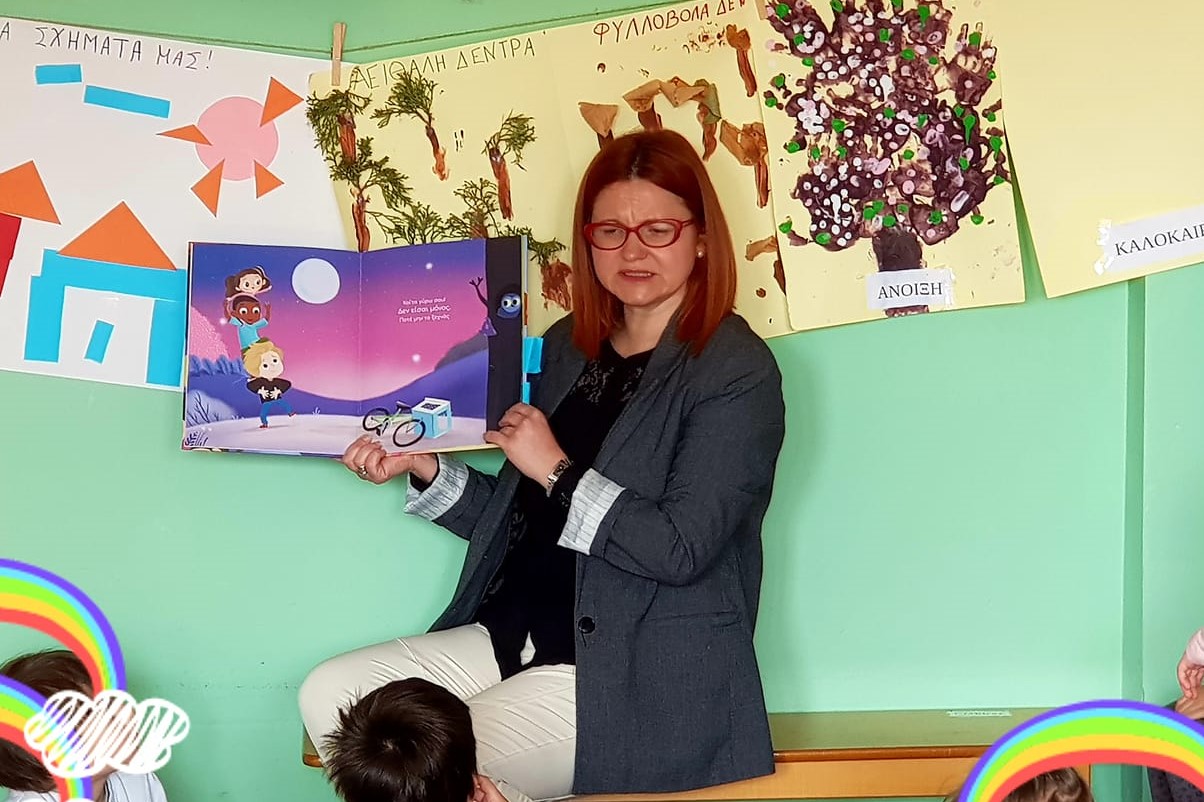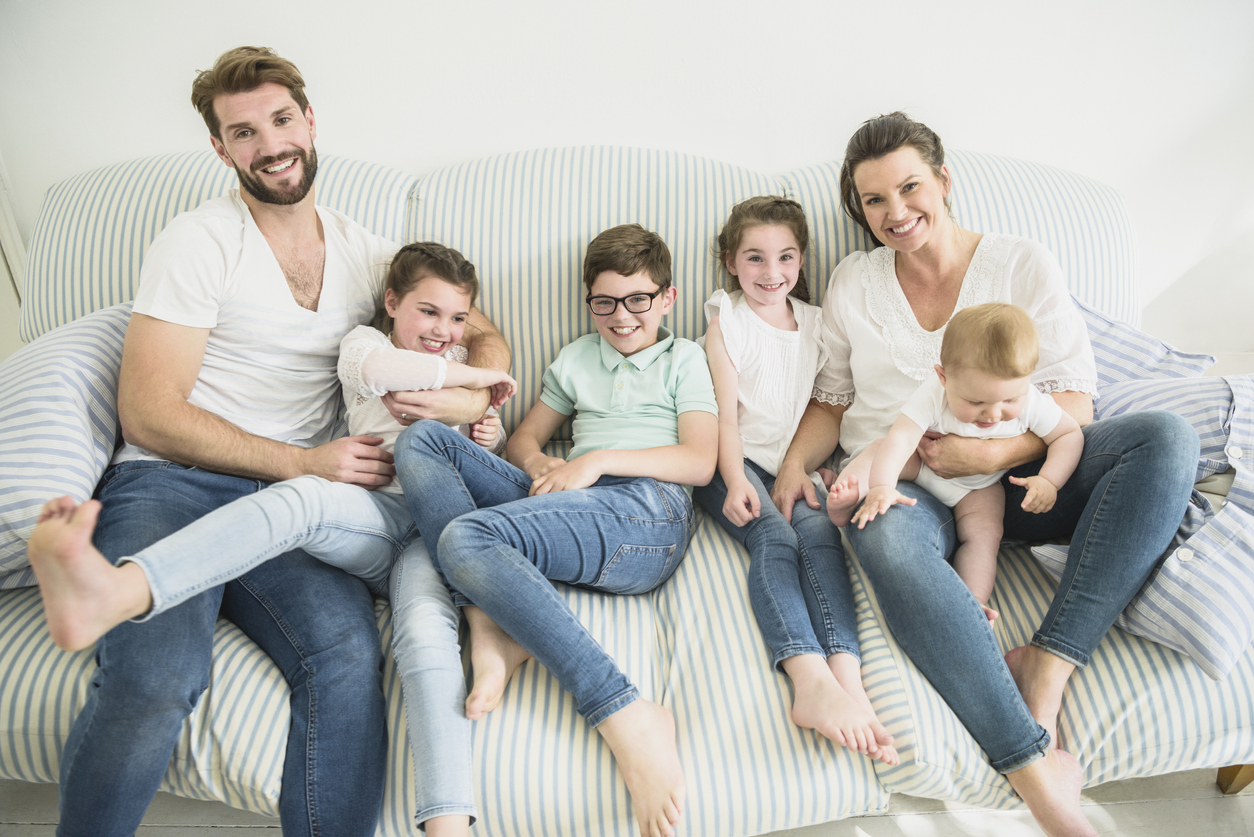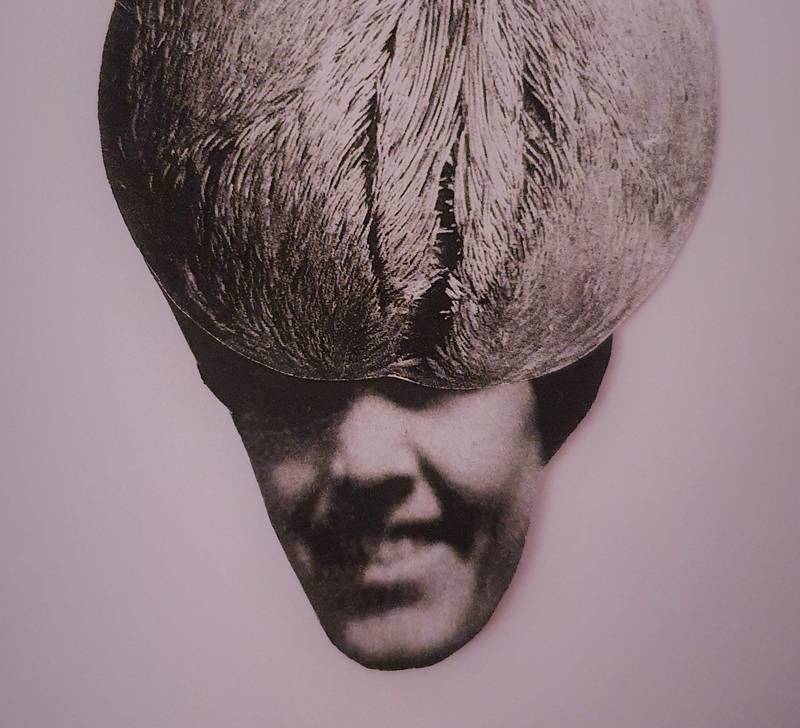27 ΔΕΚΕΜΒΡΙΟΥ, 2023

×
Ένα από τα πράγματα που μου άρεσε να κάνω με την κόρη μου και ακόμα απολαμβάνω είναι να βλέπουμε ταινίες μαζί. Ταινίες στην άνεση του σπιτιού, σκεπασμένες με το κουβερτάκι μας ή στην αίθουσα ενός κινηματογράφου με μπόλικο βουτυρωμένο ποπ-κορν και αναψυκτικό! Μια ιεροτελεστία θαρρείς: από την επιλογή της ταινίας, την προετοιμασία και την παρακολούθηση.
Η θεματολογία των ταινιών ποικίλει και διαμορφώνεται ανάλογα με την ηλικία της κόρης μου. Έχουμε φάει τις ταινίες Disney με το κουτάλι! Θα μου πεις:παιδικά; Και δεν τα βαριέσαι; Κι εγώ θα σου πω όχι. Ίσα ίσα που το διασκεδάζω κιόλας. Ταινίες που εκτός από τον κινηματογράφο, τις παρακολουθούσαμε μετά και στο σπίτι, στο dvd. Έχουμε δει το Μίκυ να κάνει χιονισμένα Χριστούγεννα μέσα στη ντάλα του Αυγούστου με ανοιχτά παράθυρα, που, σίγουρα όποιος γείτονας άκουγε, θα σκεφτόταν πως ή είμαστε παλιοημερολογίτες ή έχουμε κάποιο θέμα με το χρόνο. Τραγούδια με το Μπομπ το Σφουγγαράκη, που ακόμα θυμάμαι και τα τραγουδάω στην 13χρονη πια κόρη μου κι ας μου ξινίζει το μουτράκι, κάνοντας πια πως δεν τα θυμάται αυτά.
Οι ταινίες είναι μια εξαιρετική ευκαιρία να ενισχύσουμε το δεσμό μας με τα παιδιά μας. Πρώτα απ’όλα γιατί διασκεδάζουμε μαζί. Είναι μια δραστηριότητα που μας χαλαρώνει. Γελάμε, αφήνοντας για λίγο στην άκρη το “μαζεψε τα παιχνίδια σου” ή “κάνε τα μαθήματά σου” κι εκεί στον καναπέ ή στο κρεβάτι, κρατώντας τα στην αγκαλιά μας τους δίνουμε στοργή και χάδι, κι εκείνα απολαμβάνουν αχόρταγα την αγάπη μας.
Αλήθεια, κλείστε για λίγο τα μάτια και δείτε τα πρόσωπα των παιδιών σας, πόσο χαρούμενα και φωτεινά είναι, όταν βλέπετε μαζί μια ταινία! Μα και η βόλτα στον κινηματογράφο, ιδιαίτερα για τα νεαρότερα παιδιά, φαντάζει μία ενδιαφέρουσα περιπέτεια. Πηγαίνοντάς τα στο σινεμά, τα εξοικοιώνουμε με ένα πολύ ενδιαφέρον είδος διασκέδασης, που μεγαλώνοντας, αν το διατηρήσουν, έχει να τους προσφέρει γνώση και ευχαρίστηση. Άλλωστε η διαδικασία του κινηματογράφου τους μαθαίνει και τα βοηθά να εξελίξουν τις κοινωνικές τους δεξιότητες, από το να αγοράσουν το εισιτήριο και το ποπ κορν, μέχρι να συνομιλήσουν με κάποιον υπάλληλο ρωτώντας για την αίθουσα προβολής.
Ειδικά στις μέρες μας που οι περισσότερες παιδικές ταινίες έχουν ευφάνταστο σενάριο και ενδιαφέροντα εφέ, δεν ξετρελλαίνουν μόνο τους μικρούς, αλλά κι εμάς τους μεγάλους, που βλέποντάς τες νιώθουμε κι εμείς πάλι μικρά παιδιά.
Για μένα οι παιδικές ταινίες έχουν πάντα κρυμμένο ένα νόημα που θα αγγίξει το παιδί που έχω μέσα μου και θα με συγκινήσουν, ακόμα κι αν είναι κωμωδίες… ξέρω αυτό που έχω με το να δακρύζω σε παιδικές ταινίες πρέπει να το κοιτάξω, αλλά είναι θέμα για άλλο άρθρο. Παρακολουθώντας μια ταινία με το γιο ή την κόρη μας, έχουμε την ευκαρία, να δούμε τα δικά τους συναισθήματα να ξετυλίγονται και τις δικές τους σκέψεις να εκφράζονται. Η ταινία μπορεί να αποτελέσει αφορμή για κάποια κουβεντούλα μεταξύ μας, για κάποια ζωγραφιά που θα κάνει το παιδί ή κάποια κατασκευή ή ακόμα και κάποιο θεατρικό παιχνίδι που θα παίξει με τους φίλους του, ενσαρκώνοντας τους ήρωες της ταινίας.
Είναι πολύ σημαντικό, από την άλλη, στο χρόνο που θα αφιερώσουμε για να παρακολουθήσουμε την ταινία μαζί με τα παιδιά μας, να απενεργοποιήσουμε το κινητό μας, να απομακρύνουμε ο,τιδήποτε μπορεί να αποσπάσει την προσοχή μας και να αφιερωθούμε στα μικρά μας και την ταινία. Να είστε σίγουροι πως θα μας τσεκάρουν κατά τη διάρκεια για να δουν αν παρακολουθούμε. Κι είναι σημαντικό, να είμαστε παρόντες σε αυτή τη δραστηριότητα γιατί το μήνυμα που τους περνάμε είναι ότι τα ίδια είναι σημαντικά για εμάς, οπότε και τους αφιερώνουμε το χρόνο αυτό.
Τα χρόνια περνούν και με την κόρη μου, αρχίσαμε να βλέπουμε και κάποιες ταινίες ενηλίκων πια, είτε του παλιού ελληνικού κινηματογράφου – τον οποίο λατρεύω – είτε ξένο κινηματογράφο. Στην αρχή η επιλογή, τις περισσότερες φορές ήταν δική μου, ενώ τώρα πια διαβάζουμε τις υποθέσεις και διαλέγουμε κάποια ταινία που να αγγίζει τα γούστα και των δυο. Μας αρέσει να παρακολουθούμε ταινίες μυστηρίου και να λύνουμε με το αστυνομικό μας δαιμόνιο τις υποθέσεις.
Εκτός από το χρόνο που περνάμε μαζί, που λόγω των αυξανόμενων υποχρεώσεων κάποιες φορές είναι μειωμένος, οι ταινίες αποτελούν μια πολύ καλή αφορμή για συζήτηση. Η κόρη μου μοιράζεται μαζί μου τους προβληματισμούς της κι ίσως με αφορμή την ταινία να μου διηγηθεί κάτι από την καθημερινότητά της που είναι σχετικό και την έχει βάλει σε σκέψη.
Ανάμεσα στο ποπ κορν και τα τσιπς, εκεί που τραβάμε η μια την κουβέρτα από την άλλη για να σκεπαστούμε στον καναπέ, είχα την ευκαρία να ανακαλύψω το πρακτικό της πνεύμα και την οξυδέρκεια της σκέψης της – και ναι είμαι μάνα κουκουβάγια, όπως όλες μας άλλωστε. Μα πιότερο, έχω ακόμα την ευκαρία να της χαιδεύω τα μαλλιά και την πλάτη, όπως όταν μικρή χώραγε ολόκληρη στην αγκαλιά μου. Και πιστέψτε με, για μια έφηβη που μάλλον η μαμά της χωράει πια στην αγκαλιά της γιατί την έχει περάσει προ πολλού σε ύψος, αυτές οι στιγμές είναι ανεκτίμητες!
Το να δημιουργούμε δεσμούς με τα παιδιά μας είναι το σημαντικότερο για την ισορροπημένη ανάπτυξή τους. Το να περνάμε εποικοδομητικό χρόνο μαζί τους είναι το σπουδαιότερο δώρο που μπορούμε να τους δώσουμε μαζί με την αστείρευτη αγάπη μας.
Γράφει η Χαρά Μαρκατζίνου

×
Ένα από τα πράγματα που μου άρεσε να κάνω με την κόρη μου και ακόμα απολαμβάνω είναι να βλέπουμε ταινίες μαζί. Ταινίες στην άνεση του σπιτιού, σκεπασμένες με το κουβερτάκι μας ή στην αίθουσα ενός κινηματογράφου με μπόλικο βουτυρωμένο ποπ-κορν και αναψυκτικό! Μια ιεροτελεστία θαρρείς: από την επιλογή της ταινίας, την προετοιμασία και την παρακολούθηση.
Η θεματολογία των ταινιών ποικίλει και διαμορφώνεται ανάλογα με την ηλικία της κόρης μου. Έχουμε φάει τις ταινίες Disney με το κουτάλι! Θα μου πεις:παιδικά; Και δεν τα βαριέσαι; Κι εγώ θα σου πω όχι. Ίσα ίσα που το διασκεδάζω κιόλας. Ταινίες που εκτός από τον κινηματογράφο, τις παρακολουθούσαμε μετά και στο σπίτι, στο dvd. Έχουμε δει το Μίκυ να κάνει χιονισμένα Χριστούγεννα μέσα στη ντάλα του Αυγούστου με ανοιχτά παράθυρα, που, σίγουρα όποιος γείτονας άκουγε, θα σκεφτόταν πως ή είμαστε παλιοημερολογίτες ή έχουμε κάποιο θέμα με το χρόνο. Τραγούδια με το Μπομπ το Σφουγγαράκη, που ακόμα θυμάμαι και τα τραγουδάω στην 13χρονη πια κόρη μου κι ας μου ξινίζει το μουτράκι, κάνοντας πια πως δεν τα θυμάται αυτά.
Οι ταινίες είναι μια εξαιρετική ευκαιρία να ενισχύσουμε το δεσμό μας με τα παιδιά μας. Πρώτα απ’όλα γιατί διασκεδάζουμε μαζί. Είναι μια δραστηριότητα που μας χαλαρώνει. Γελάμε, αφήνοντας για λίγο στην άκρη το “μαζεψε τα παιχνίδια σου” ή “κάνε τα μαθήματά σου” κι εκεί στον καναπέ ή στο κρεβάτι, κρατώντας τα στην αγκαλιά μας τους δίνουμε στοργή και χάδι, κι εκείνα απολαμβάνουν αχόρταγα την αγάπη μας.
Αλήθεια, κλείστε για λίγο τα μάτια και δείτε τα πρόσωπα των παιδιών σας, πόσο χαρούμενα και φωτεινά είναι, όταν βλέπετε μαζί μια ταινία! Μα και η βόλτα στον κινηματογράφο, ιδιαίτερα για τα νεαρότερα παιδιά, φαντάζει μία ενδιαφέρουσα περιπέτεια. Πηγαίνοντάς τα στο σινεμά, τα εξοικοιώνουμε με ένα πολύ ενδιαφέρον είδος διασκέδασης, που μεγαλώνοντας, αν το διατηρήσουν, έχει να τους προσφέρει γνώση και ευχαρίστηση. Άλλωστε η διαδικασία του κινηματογράφου τους μαθαίνει και τα βοηθά να εξελίξουν τις κοινωνικές τους δεξιότητες, από το να αγοράσουν το εισιτήριο και το ποπ κορν, μέχρι να συνομιλήσουν με κάποιον υπάλληλο ρωτώντας για την αίθουσα προβολής.
Ειδικά στις μέρες μας που οι περισσότερες παιδικές ταινίες έχουν ευφάνταστο σενάριο και ενδιαφέροντα εφέ, δεν ξετρελλαίνουν μόνο τους μικρούς, αλλά κι εμάς τους μεγάλους, που βλέποντάς τες νιώθουμε κι εμείς πάλι μικρά παιδιά.
Για μένα οι παιδικές ταινίες έχουν πάντα κρυμμένο ένα νόημα που θα αγγίξει το παιδί που έχω μέσα μου και θα με συγκινήσουν, ακόμα κι αν είναι κωμωδίες… ξέρω αυτό που έχω με το να δακρύζω σε παιδικές ταινίες πρέπει να το κοιτάξω, αλλά είναι θέμα για άλλο άρθρο. Παρακολουθώντας μια ταινία με το γιο ή την κόρη μας, έχουμε την ευκαρία, να δούμε τα δικά τους συναισθήματα να ξετυλίγονται και τις δικές τους σκέψεις να εκφράζονται. Η ταινία μπορεί να αποτελέσει αφορμή για κάποια κουβεντούλα μεταξύ μας, για κάποια ζωγραφιά που θα κάνει το παιδί ή κάποια κατασκευή ή ακόμα και κάποιο θεατρικό παιχνίδι που θα παίξει με τους φίλους του, ενσαρκώνοντας τους ήρωες της ταινίας.
Είναι πολύ σημαντικό, από την άλλη, στο χρόνο που θα αφιερώσουμε για να παρακολουθήσουμε την ταινία μαζί με τα παιδιά μας, να απενεργοποιήσουμε το κινητό μας, να απομακρύνουμε ο,τιδήποτε μπορεί να αποσπάσει την προσοχή μας και να αφιερωθούμε στα μικρά μας και την ταινία. Να είστε σίγουροι πως θα μας τσεκάρουν κατά τη διάρκεια για να δουν αν παρακολουθούμε. Κι είναι σημαντικό, να είμαστε παρόντες σε αυτή τη δραστηριότητα γιατί το μήνυμα που τους περνάμε είναι ότι τα ίδια είναι σημαντικά για εμάς, οπότε και τους αφιερώνουμε το χρόνο αυτό.
Τα χρόνια περνούν και με την κόρη μου, αρχίσαμε να βλέπουμε και κάποιες ταινίες ενηλίκων πια, είτε του παλιού ελληνικού κινηματογράφου – τον οποίο λατρεύω – είτε ξένο κινηματογράφο. Στην αρχή η επιλογή, τις περισσότερες φορές ήταν δική μου, ενώ τώρα πια διαβάζουμε τις υποθέσεις και διαλέγουμε κάποια ταινία που να αγγίζει τα γούστα και των δυο. Μας αρέσει να παρακολουθούμε ταινίες μυστηρίου και να λύνουμε με το αστυνομικό μας δαιμόνιο τις υποθέσεις.
Εκτός από το χρόνο που περνάμε μαζί, που λόγω των αυξανόμενων υποχρεώσεων κάποιες φορές είναι μειωμένος, οι ταινίες αποτελούν μια πολύ καλή αφορμή για συζήτηση. Η κόρη μου μοιράζεται μαζί μου τους προβληματισμούς της κι ίσως με αφορμή την ταινία να μου διηγηθεί κάτι από την καθημερινότητά της που είναι σχετικό και την έχει βάλει σε σκέψη.
Ανάμεσα στο ποπ κορν και τα τσιπς, εκεί που τραβάμε η μια την κουβέρτα από την άλλη για να σκεπαστούμε στον καναπέ, είχα την ευκαρία να ανακαλύψω το πρακτικό της πνεύμα και την οξυδέρκεια της σκέψης της – και ναι είμαι μάνα κουκουβάγια, όπως όλες μας άλλωστε. Μα πιότερο, έχω ακόμα την ευκαρία να της χαιδεύω τα μαλλιά και την πλάτη, όπως όταν μικρή χώραγε ολόκληρη στην αγκαλιά μου. Και πιστέψτε με, για μια έφηβη που μάλλον η μαμά της χωράει πια στην αγκαλιά της γιατί την έχει περάσει προ πολλού σε ύψος, αυτές οι στιγμές είναι ανεκτίμητες!
Το να δημιουργούμε δεσμούς με τα παιδιά μας είναι το σημαντικότερο για την ισορροπημένη ανάπτυξή τους. Το να περνάμε εποικοδομητικό χρόνο μαζί τους είναι το σπουδαιότερο δώρο που μπορούμε να τους δώσουμε μαζί με την αστείρευτη αγάπη μας.
Γράφει η Χαρά Μαρκατζίνου
ΠΗΓΗ:
https://www.themamagers.gr/family/eimaimama/giati-ine-poly-simantiko-na-vlepoume-tenies-mazi-ta-pedia-mas/(accessed 28.1.23)







 In the podcast we explore what we might do at each of these levels:Society – We could notice the images around us and be critical of them. We could confront fat-shaming remembering that it’s actually poverty, type of diet, and fitness that relate to health – not fatness; that being ‘underweight’ is generally more risky health-wise than being ‘overweight’; that these categories are based on an old model of measurement that doesn’t relate to how bodies are these days; and that shaming people about their bodies makes everything far worse – not better – for them. We could engage in body-related activism. We could seek out different subcultures that incorporate more diversity of bodies or expand our ideas of what is beautiful.
In the podcast we explore what we might do at each of these levels:Society – We could notice the images around us and be critical of them. We could confront fat-shaming remembering that it’s actually poverty, type of diet, and fitness that relate to health – not fatness; that being ‘underweight’ is generally more risky health-wise than being ‘overweight’; that these categories are based on an old model of measurement that doesn’t relate to how bodies are these days; and that shaming people about their bodies makes everything far worse – not better – for them. We could engage in body-related activism. We could seek out different subcultures that incorporate more diversity of bodies or expand our ideas of what is beautiful.


